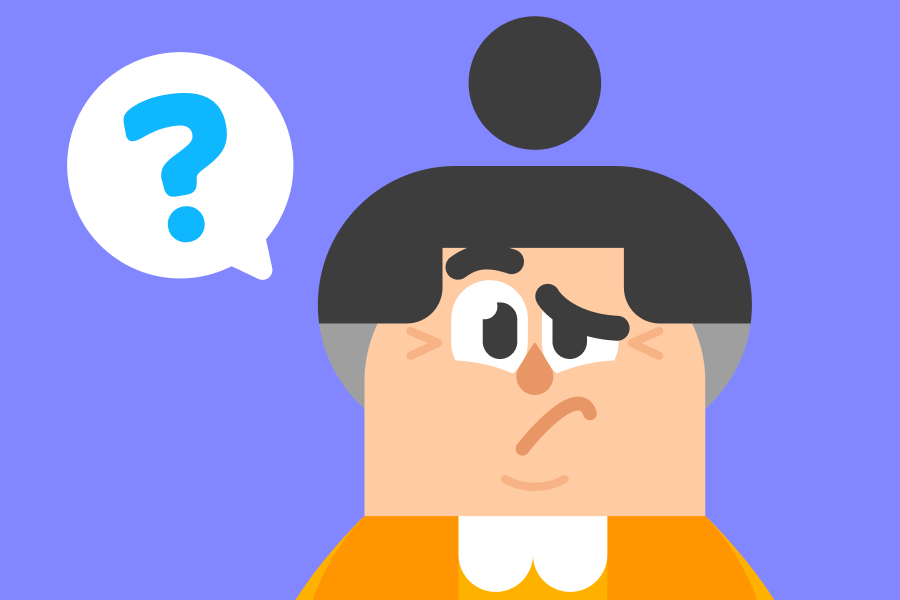English learners hear and use questions right from the start of their learning journey, often with a simple How are you? But English questions are more complicated than they might first seem, especially for early learners. There are question words (like who and what), verbs that change places, and sometimes the extra word do or does… It's a lot to keep track of!
Here are the 3 main kinds of English questions that beginner and intermediate learners need to know about.
English questions: the basics
The 3 main English questions are used to get different kinds of information, and each question type has different rules for what order words go in:
Yes/no questions
These questions can be answered with yes or no, so you'll see them referred to as yes/no questions. For example:
- Are you going to school tomorrow?
- Does she have a car?
- Should we call them first?
"Wh" questions with question words
These questions use a question word to say what kind of information you need, like to find out where something is happening, who is doing something, or when something happened. For example:
- Where is your school?
- Why does she have a car?
- When should we call them?
Tag questions
Unlike yes/no questions and questions asking for specific information, tag questions are short questions at the end of a statement that ask the listener to confirm the statement. For example:
- Your school is downtown, isn't it?
- She has had the car for a long time, hasn't she?
- We shouldn't call them until later, should we?
You can think of the rules for each type of question as word order formulas, and the formulas will tell you what order to arrange the subject, verb, object, and any other question words.
Tips for learning to make English questions
In English, each type of question has different variations that follow different formulas for word order. That can feel like a lot to learn! Here are some tips for studying and practicing English questions:
- Practice questions with the verb to be. Beginners can make the most of their study time by focusing on this very common, but very irregular verb. Questions with to be often follow a different formula compared to other verbs, so strengthen one formula at a time with lots of to be practice!
- Start with present tense. This is the first tense that you study, so it makes sense to start here! That means you can skip thinking about questions with did for now. Instead, work on making yes/no questions and "wh" questions with the present tense verbs you know. Start by categorizing them according to the formula needed to create them, and as you get more practice, make groups of questions around topics (like questions you'd need at a restaurant, questions you ask on a date, questions for a work meeting).
- Sharpen your pencil. Writing is a great, low-pressure way to practice forming questions in English. Start by copying questions you see in your Duolingo lessons, and practice making brand-new questions, too. You can also write short dialogues filled with questions and answers, or list out questions you'll need the next time you use English (like for an upcoming job interview). Or write out the burning questions you have about your favorite English-language TV series!
- Gradually add more verbs to your study routine. As you learn new verbs in your Duolingo lessons, try forming both yes/no and "wh" questions with them. You could write yes/no questions with the verb on the left side of a sheet of paper and "wh" questions on the right—and soon you'll have a list of questions with the verbs you know!
- Think about your language goals. If you are planning a trip to an English-speaking destination, practice the questions you'll need the most—that might mean focusing on "wh" questions (like Where is the museum?). If you're preparing for a career in hospitality, you might practice more yes/no questions, like Would you like to pay by card?
Any questions? 😉
Even though there are many kinds of questions in English, you'll soon notice a couple of patterns you can follow. That's why learning the question formulas can be so helpful! Start with just one or two types of verbs and take note of the questions you hear around you—in your Duolingo lessons, in the English-language music you listen to, in movies and TV shows, and on social media! Anywhere you use English, you'll be getting practice with English questions. 💪



